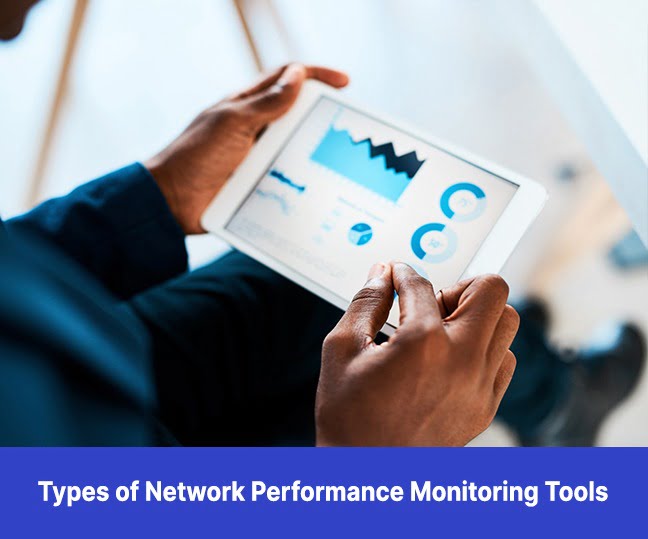Virtual Machines (VMs) enable enterprises to scale resources according to demand without the heavy investment in physical hardware. However, with great flexibility comes the need for vigilant oversight. This is why Virtual Machine Monitoring (VMM) makes sure that VMs operate at their peak performance, remain available, and are secured against potential threats.
Related blog: 5 Key Features to Look for in Network Monitoring Software
Understanding the importance of VM monitoring
VM monitoring revolves around the continuous observation and management of virtual machine instances. These VMs, which are digital versions of physical computers, play a crucial role in modern computing environments by allowing multiple operating systems to run on a single physical machine. The primary objectives of VM monitoring include optimizing resource utilization, minimizing downtime, and securing VMs from potential cyber threats.
VM monitoring helps maintain the performance, availability, and security of virtual environments. Enterprises can unearth and resolve issues before they escalate so that applications run smoothly and data remains secure. Moreover, VM monitoring provides insights into resource usage patterns, helping in capacity planning and resource allocation to meet changing demands.
VM monitoring vs. physical server monitoring
The leap from monitoring physical servers to VMs is significant. Unlike physical servers, VMs share hardware resources, making it more challenging to pinpoint the root cause of performance issues. VM monitoring focuses on the virtualization layer and the VMs themselves, offering a detailed view of the health and performance of each virtual instance. The granular visibility is crucial for diagnosing and resolving issues specific to virtualized environments.
However, compared to physical servers, virtual environments bring forth barriers such as:
- Resource contention: VMs residing on the same physical host often compete for resources, leading to potential performance bottlenecks. Identifying and managing these conflicts is essential for maintaining optimal performance.
- VM sprawl: The ease of deploying VMs can lead to uncontrolled growth, known as VM sprawl, making management and monitoring increasingly difficult. The sprawl can obscure visibility and lead to resource wastage.
- Virtual network visibility: Monitoring virtual networks is challenging due to their dynamic nature. Traditional tools designed for physical networks may fall short of providing the necessary insights into virtual network traffic and performance.
Best practices for effective VM monitoring
Proactive monitoring strategy
Anticipate issues before they impact performance by implementing a proactive monitoring approach. It involves setting up alerts for potential problems and regularly analyzing performance data to identify trends. This can minimize downtime and optimize the allocation of resources so that VMs operate within their optimal parameters.
By staying ahead of potential issues, IT teams can achieve seamless operations, reducing the need for emergency interventions.
Specialized VM monitoring tools
Utilize tools specifically designed for virtual environments. These tools offer full visibility into VM performance, including metrics on CPU, memory, storage, and network usage. Features like predictive analytics and automated issue resolution enhance the monitoring process, enabling better management of the virtual infrastructure.
The right tools can simplify the complexities of VM monitoring, making it easier to maintain and scale your virtual environment.
Resource allocation reviews
Performance data should inform resource allocation. Regularly review and adjust VM resources to meet current demands without overprovisioning. It also helps in cost management by avoiding unnecessary expenditure on unused resources.
Frequent reviews ensure that each VM receives the resources it needs to perform optimally, adapting to changing demands and workloads over time.
Integration into broader IT monitoring
VM monitoring should not exist in isolation. Integrate it into the overall IT infrastructure monitoring strategy to create a holistic view of both physical and virtual components. It also ensures that any issue, whether in the physical or virtual environment, is quickly identified and addressed, maintaining the integrity and performance of the entire IT infrastructure.
Focus on security, compliance, and disaster recovery
Incorporate IT security and compliance into your VM monitoring strategy. Plan for disaster recovery, ensuring that VMs are included in backup and restoration plans. It results in protecting against data breaches and cyber threats while driving business continuity in the face of unexpected events.
Regular updates and audits of security protocols keep the virtual environment safe, while a robust disaster recovery plan guarantees minimal downtime and data loss, ensuring the resilience of your IT operations.
Key metrics for VM monitoring
CPU usage
Monitoring CPU performance is vital to prevent overutilization, which can lead to performance degradation or underutilization, which indicates wasted resources. Balancing CPU load across VMs enables optimal use of resources. Additionally, tracking CPU usage trends over time can help in forecasting future resource requirements and planning capacity accordingly.

Memory utilization
Memory consumption is another critical metric. High memory usage can lead to bottlenecks, affecting VM performance. Monitoring memory helps in optimizing allocation and ensuring smooth operation. Implementing alerts for high memory usage can also prevent potential performance issues before they escalate.
Storage I/O
Input/output operations are indicative of how well storage resources are handling the demands placed on them. Monitoring these operations helps in identifying potential storage-related issues that could impact VM performance. Regularly assessing storage I/O performance enables timely upgrades or adjustments to storage infrastructure to meet changing demands.
Related article: Network Monitoring System and All You Need to Know in 2024
Network performance
Since VMs rely heavily on network connectivity, monitoring network bandwidth and latency is important. It ensures that VMs can communicate without performance lags or disruptions. Continuous network performance monitoring also aids in detecting and resolving network anomalies or bottlenecks promptly, maintaining optimal VM connectivity and function.



















